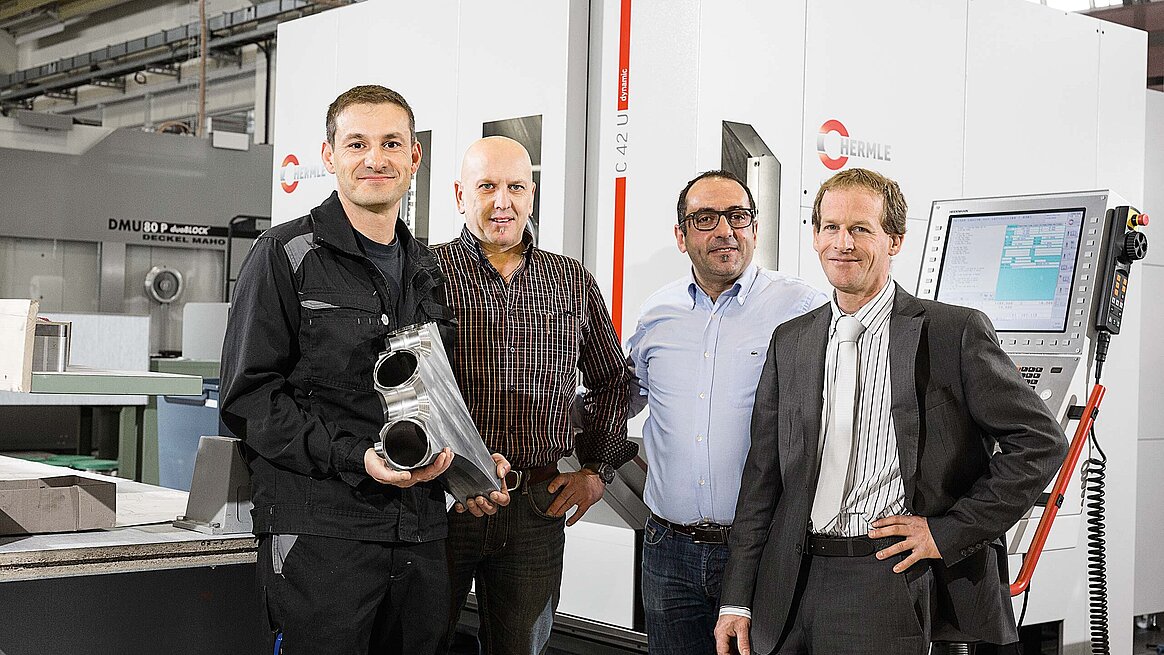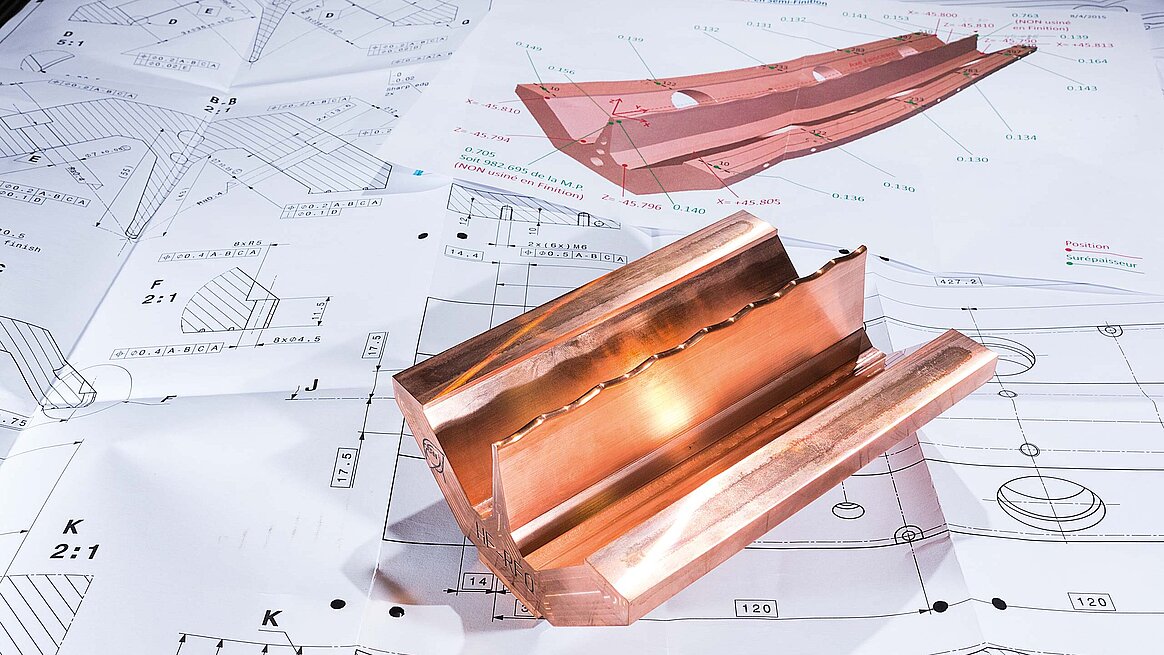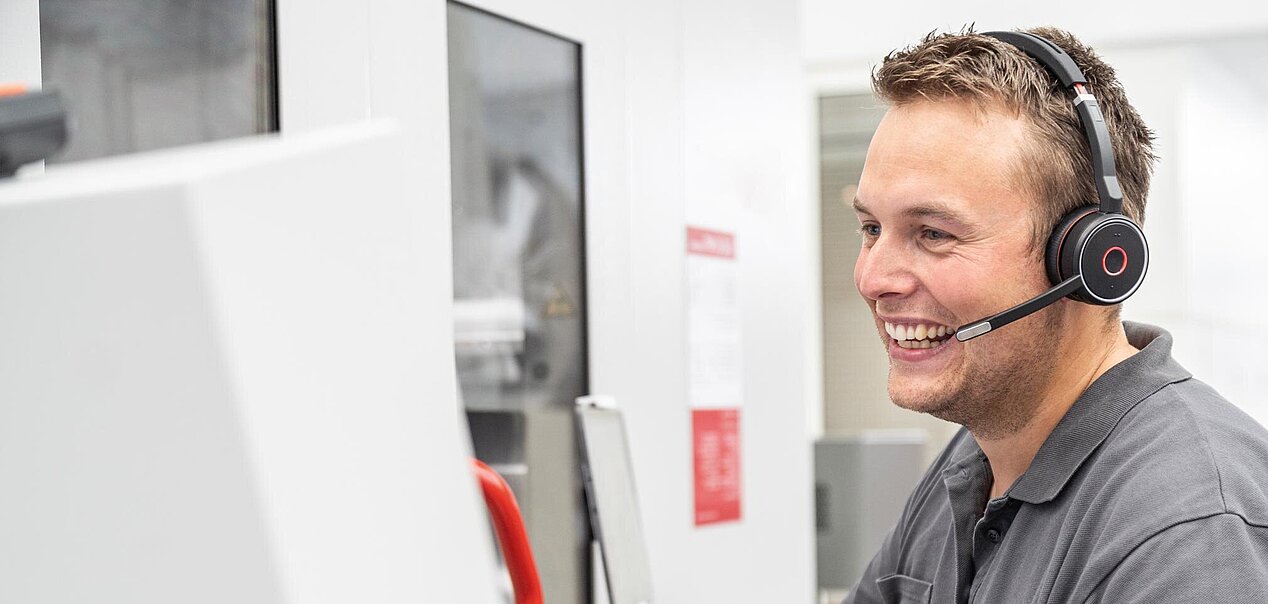Gefräste Präzision spart Aufwand und Energie
C 42 U | CERN Fine mechanics research
When it comes to precision in milling of mechanical components for manufacturing prototypes and development processes, CERN, the European Organization for Nuclear Research, uses, among other tools, a 5 axis CNC high-power machining centre from Hermle.
Whenever it comes to international research on the basis of physics, the name CERN is mentioned automatically. This European Organisation for Nuclear Research is based in Meyrin in the Swiss Canton of Geneva and is a massive research facility with more than 3200 employees. With the help of so-called particle accelerators, the construction of matter is researched. Founded in 1954, CERN has 21 member states today. More than 11000 international guest scientists from more than 85 countries work on experiments at CERN every year – this means that there is a whole series of technical and administrative prerequisites that have to be fulfilled and maintained. The largest (at the moment) and best known particle accelerator is the Large Hadron Collider (LHC) which was taken into operation in the year 2008. The LHC is 27 km long and consists, viewed soberly, of a massive number of mechanical and electronic components. The special thing about the accelerator is its 9178 supra-conductive magnets with lengths of up to 15 m. These magnets are required to hold the particle stream on course before they are brought to collision during the experiments. There are four collision points in the LHC at which, with the help of massive detectors, the resulting substructure of particles is investigated during the collision.
After the first intensive LHC operational phase (2010 - 2013), there was a two-year long intensive period of maintenance. Besides numerous optimisations, this concerned mainly the 10700 electrical connections between the supra-conductive dipole and quadrupole magnets. These sustainable improvements made it possible for the LHC to go into "Restart" in April 2015.
For the maintenance and repair phases within the 26659 m long tunnel, a large number of components were newly developed and, consequently, manufactured in the high numbers required. The manufacturing process takes place under application of extremely high precision and quality standards developed within the "Engineering Department" of CERN, by the "Mechanical & Materials Engineering Group" (MME), with its 175 employees, who are responsible for this task. These are allocated to technical workshops, one of which is concerned with the manufacture of prototypes and samples as well as the development of machining processes.
-

From left to right, the machine operator Christophe Delorme, the workshop supervisor Jean-Marie Geisser, the supervisor of mechanical manufacturing in MME, Said Atieh, all three from CERN in Meyrin, and Martin Tschupp, sales engineer at Hermle (Switzerland) AG -

A complex 5 axis workpiece made of copper (RFQ = Radio Frequency Quadrupole), which must be processed with µm precision and with highly reproducible tolerances; after determining the machining process, the appropriate engineering and process documentation will be sent to the suppliers of such components -

Further components from the wide spectrum of parts at the MME in CERN, for example, parts of the LHC supra-conductive magnets, radio frequency couplers and antennas.
One of the guidelines: Precision milling that can be encapsulated in processes
Said Atieh, Supervisor of "Mechanical and Materials Engineering" in the aforementioned "Engineering Department", said the following with regard to the tasks performed by his roughly 40 professional employees: "We are the internal service providers for the mechanics of CERN and this means that we are responsible for the manufacture of prototypes as well as for selecting and guiding the suppliers of mechanical components. Our researchers, who are also our customers, demand precision within µm tolerances, in order to avoid accumulative tolerances in the kilometer long particle accelerators and also in order to reduce the energy input. We are talking here about x-thousand to hundreds of thousands of mechanical components which have to work together and which we need at the times specified. This is only possible with the extensive support of external partners (suppliers), who must be accordingly capable and qualified. In order to have tight reins on all of the processes and, in doing so, to ensure reproducible quality, we use prototype manufacturing methods to develop technology and know-how based solutions that our industrial partners also often fall back on. For this reason we set out to achieve the highest machining precision from the very beginning and use the best machines available on the market, for example, precision milling CNC machining centres from Hermle." It was not easy for Said Atieh and his Group Leader, Francesco Bertinelli to find the most suitable machine. The 5 axis CNC high-power machining centre of type C 42 U from Maschinenfabrik Berthold Hermle AG, based in D-78559 Gosheim, proved itself at the end of the day to be by far the most precise machine and convincingly beat one after the other of the few potential competitors left, who had already been reduced to a small group using performance criteria. Said Atieh explained: "Anybody who wants to do research and development on such a high level must unify the individual components that have the greatest performance. The tender for the replacement acquisition planned at that time was for older precision milling machines capable of reproducible machining at milling tolerances within 2 to 5 µm. Hermle's performance in this area was clearly and consistently below the smallest tolerance value! This, together with the support, as well as the well-known and good service have convinced us to use Hermle machines for precision milling – a decision that we have not regretted up to today."
Demands: 2 to 5 µm; achieved: 0.5 µm
The 5 axis CNC high-power machining centre of type C 42 U installed in the CERN workshops are a standard machining centre with a main spindle for speeds of up to 18000 min-1 – equipped with the tool holding fixture HSK A63, a tool magazine with 42 receptacles, an NC swivelling rotary table with a diameter of 800 x 630 mm, electric heat compensation, tool measurement, tool breakage system, touch probe, ICS system with 40 bar and the Heidenhain control iTNC530 HSCI. The machine was supplemented with ex-works options, thus, standard options. Precision package I for the axes X, Y and Z, Precision package II for die axes A and C, and the 5 axis acceptance protocol for the test workpiece "Cube". This was manufactured in part with a precision of 0.2 µm; here, a machining precision of 0.5 µm revealed itself to be reproducible over longer periods of time. Finally, Said Atieh explained: "The Hermle machining centre C 42 U combines concept, exact work, power and reproducible machining precision in an ideal symbiosis, additionally supplemented with very good service. This is particularly important because prototypes often have to be manufactured very quickly; therefore, as in the production hall, high machine availability is also a demand here. Furthermore, it should be considered that our industrial partners also tend to make the same choice we have made – they often wish to have not only the process know-how from the MME of CERN but, in order to be sure, they often use exactly the same machine which is of great benefit for everyone involved."


